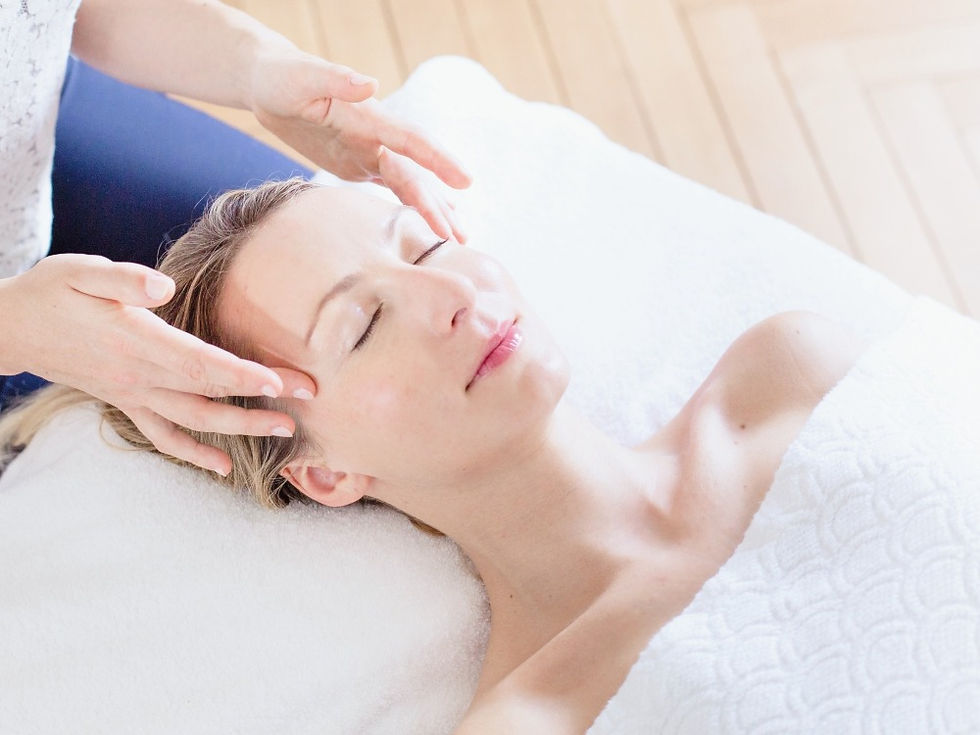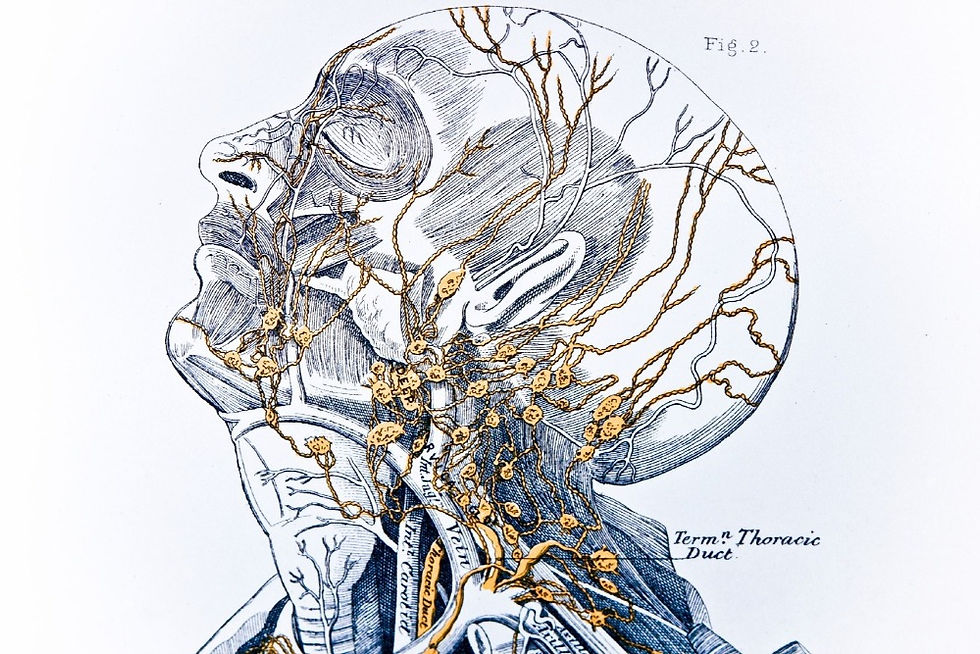Lymph Flow: Everything You Need to Know About Lymphatic Drainage | maison ito
- Emilie Celine
- May 17, 2020
- 4 min read
Updated: Apr 1, 2021
Have you been hearing about boosting your immune system with lymphatic drainage lately? It has been creating a good deal of excitement in the realm of massage therapy and, in particular, facial massage.
The technique’s growing popularity comes with very good reason. It produces non-surgical, all-natural results that many persons previously turned to invasive procedures to achieve.

Credit: Maison Ito — The Mum-to-Be
It all has to do with moving lymph (the fluid that helps you fight infections and clear away toxic waste) around your body. If you would like to know how it works and show your lymph nodes some love, then keep reading!
| Lymph and The Lymphatic System
Lymph is a clear, thin fluid that gets squeezed out of your blood and collects between the cells of the tissues of your body. It contains water, some proteins, bodily wastes and toxins, as well as lymphocytes, a type of white blood cells.
Lymph is in constant motion all around your body. It drains into lymph vessels which take it through lymph nodes on its way to being redeposited into your blood. Apart from its vessels and nodes, your lymphatic system also includes organs such as your spleen (located behind your stomach), thymus (in front of your heart), and your tonsils (in the back of your throat).
| Where in Your Body Are Lymph Nodes Located?

Illustration: The lymphatic system in the face
The lymph nodes are tiny sacks that contain a high concentration of those all-important, germ-fighting lymphocytes. You have around 600 lymph nodes located all over your body with about 300 of them found in your neck alone! If you have an infection, your lymph nodes in the region of the infection will swell – an indication that they are producing more lymphocytes.
Some lymph nodes are located deep inside your face while others are quite superficial and you can actually feel them under your skin. That is why your doctor might press along the sides of your neck, your jawline, and behind your ears, as well as your temples and just above your clavicle (collarbone) when doing an exam.
| 3 Easy Ways to Activate Lymph Flow
Manual Lymph Drainage
In the 1930’s, Danish doctors Emil and Estrid Vodder recognized how beneficial an active lymphatic system can be. They developed the lymphatic drainage technique which is also known as lymphatic massage or manual lymph drainage. The Vodders used it as a non-surgical way to treat their patients who suffered from lymphedema (swelling due to lymph build-up). The awesome thing about the technique is that you can do it yourself – once you learn the right moves, that is.
Just Move Aside from the massage, which helps move lymph just below the skin, you can get lymph moving deep inside you by simply moving your body. So, by just going about your day (walking, bending, reaching, etc.) you are helping lymph to move.
Exercise Exercise is also a good way to get lymph moving so it can do its job of whisking away waste, strengthening your immune system, and helping to keep you healthy. Plus, as Emilie Celine, facialist at Maison Ito and personal trainer, points out: “Exercise is a tool to release endorphins and serotonin, the feel-good hormones that leave you feeling happier and more confident.”
| Benefits of Lymphatic Drainage for the Face
Lymphatic drainage facial massage activates lymph flow. This reduces the puffiness that comes with lymphedema by moving lymph away from areas of the face where it has pooled up. It also plumps up skin by getting lymph to move into sections of your face that may be sagging or tired-looking.
The result is firmer, healthier-looking skin with a reduction in the appearance of fine lines and wrinkles.
When performed as a facial massage, other benefits of lymphatic drainage include:
Improved complexion
Diminished acne breakouts and blackheads
Reduced swelling, especially in the eye area
Lessening of hyperpigmentation of the skin
| When and How to Perform a Lymphatic Drainage Massage
Are you thinking of taking advantage of the natural facelift that lymphatic drainage provides? The experts suggest beginning with a professional facial massage every 10 days for the first 2 months and then maintaining the effect with monthly sessions. You can also do a daily at-home self-massage to help stimulate your lymph. Here is a good tutorial featuring celebrity facialist Joanna Vargas.
Credit: Dermstore Youtube starring Joana Vargas celebrity facialist
Plus, as you can see in the video, a DIY facial massage to get lymph moving is totally possible. Go ahead and give it a try! It takes just a few minutes and can be done as a part of your morning skincare routine.
At Maison Ito, the use of semi-precious stones is incorporated into the procedure. The Gua Sha Ritual, for example, uses black nephrite jade and quartz tools to apply the gentle pressure required to stimulate the skin and move lymph. This option also includes the use of Jade Rollers and Quartz Mushrooms to glide over the skin, producing both a calming and depuffing effect.
| Lymphatic Drainage and General Wellness
True wellness is achieved when you focus on the health of your mind, body, and spirit. Many persons have embraced lymphatic drainage massage as part of their holistic approach to achieving and maintaining wellness. Activating your lymphatic system produces physical results you can see and feel while giving your self-confidence a definite boost. In essence, it is an empowering expression of self-love. For the full tutorial on how to perform your own lymphatic drainage facial massage, contact Emilie Celine at Maison Ito to book online private coaching now.
At Maison Ito, we’ve seen lymphatic drainage work and its benefits proven on numerous occasions. We are super excited to share that knowledge with you as we promote wellness through natural, holistic approaches such as the massages we offer both in our salon and via online tutorials. So, let’s get started!
BY EMILIE CELINE
#immunesystem #wellness #health #selfcare #selflove #lymphaticdrainage #lymph #lymphaticmassage #massage #massagetherapy #therapeauticmassage #massagelife #massagetime #detox #antistress #antiageing #antiaging #relax #relaxation #facials #facemassage #facecare #skinrejuvenation #skincare #skininsta #wellness #maison_ito #barcelona #bcn




Comments